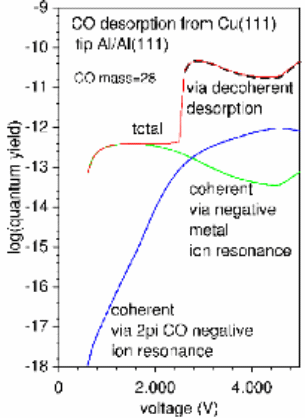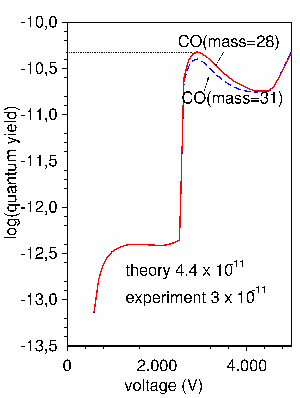
A decoherent desorption mechanism via the short-lived transient negative ion resonance of the sample surface (mostly due to the antibonding CO 5sigma - Cu 4pz interaction), which is created through electron injection and interacts with the CO molecule, provides an explanation for the existance of the voltage threshold for CO desorption and reproduces the quantum yield and the isotope effect as observed in the STM experiment.
The decoherent desorption mechanism explains all features of the current-induced CO transfer in STM. It involves the transient occupation of the antibonding CO 5sigma - Cu 4pz resonance by the tunnelling electron followed by decay into unbound CO core movement states of the surface potential, is the rate limiting step. The excitation into the lowest unbound state of the surface potential determines the existance and the value of the voltage threshold for desorption.


Left: Quantum yield in current induced CO desorption on Cu(111) via different desorption mechanisms as a function of the applied voltage.
Right: Quantum yield for the current-induced desorption of CO on Cu(111) for two CO isotopes with masses 28 and 31, respectively. The ratio of the quantum yields for both isotopes equals 1.5 in the theory and in experiment it is 2.7(+0.3/-0.5).
D. Drakova and G. Doyen, J. Phys.: Conf. Ser. 61, pp 262-268 (2007).